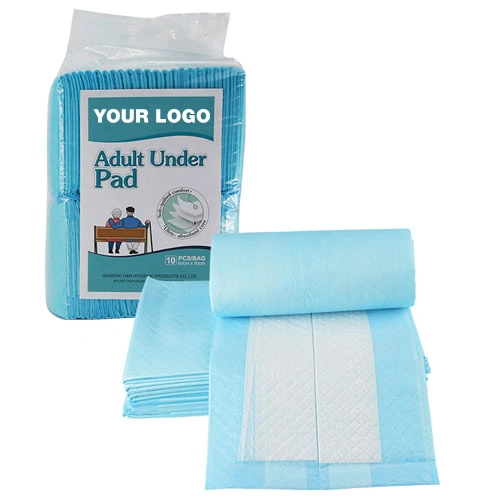Disposable medical underpads, often referred to as chux or bed pads, are an essential item in medical and home care settings. Designed to protect surfaces and provide comfort, underpads help manage incontinence and other health needs with minimal hassle. This guide will explore the key features, benefits, and uses of these handy pads, specifically focusing on the 30×60 size.
1. What are Disposable Medical Underpads?
Disposable medical underpads are absorbent pads designed to capture moisture, prevent leaks, and protect beds, chairs, and other surfaces. They typically consist of multiple layers, including a top layer that wicks moisture away, a highly absorbent core, and a waterproof backing. The 30×60 size provides a larger coverage area, making it ideal for use on beds or as a protective layer for individuals with limited mobility.
2. Key Features of Medical Underpads (30×60)
- Absorbency: The core of these pads is designed to quickly absorb liquids, preventing leaks and keeping skin dry. This can reduce discomfort, skin irritation, and the risk of infection.
- Waterproof Backing: The bottom layer is often made of a waterproof material, such as polyethylene, to prevent fluid from seeping through onto furniture, bedding, or floors.
- Disposable Convenience: Unlike reusable underpads, disposable options can be easily discarded after use, eliminating the need for washing and offering a more hygienic solution.

3. Primary Uses of Underpads
- Incontinence Management: Underpads are a reliable aid for individuals dealing with urinary or fecal incontinence, as they help contain moisture and protect surfaces from contamination.
- Post-Surgery Care: They are often used in hospitals or home care settings to provide an extra layer of protection for bedridden or recovering patients.
- Changing Pads for Infants and Children: The large coverage size makes 30×60 underpads suitable as changing pads for young children, providing a clean, soft, and absorbent surface.
- Animal Care: Pet owners often use underpads for training puppies or caring for older animals that may have bladder control issues.
4. Benefits of Using Disposable Underpads
- Hygienic Solution: Disposable underpads can be discarded immediately after use, reducing the risk of bacterial build-up and maintaining a clean environment.
- Ease of Use: The simple application and disposal make underpads ideal for caregivers who need a quick and effective solution to manage leaks and spills.
- Cost-Effective: While reusable pads can be washed and reused, disposable underpads offer a lower upfront cost and convenience that may suit temporary or unpredictable needs.
5. Choosing the Right Underpad
When selecting a disposable underpad, it is important to consider factors such as absorbency, size, and intended use. The 30×60 size is ideal for covering larger surfaces and providing protection during sleep, extended rest, or treatment. Make sure to choose a pad with sufficient absorbency to handle expected fluid volume and to maintain a dry, comfortable experience.
6. Conclusion
Disposable medical underpads, particularly those in the 30×60 size, are valuable tools for maintaining hygiene and comfort in both medical and home care settings. By providing a reliable barrier against moisture, they offer an effective solution for incontinence management, post-operative care, and more. With their ease of use and high level of protection, underpads play a key role in ensuring the well-being of patients and caregivers alike.
